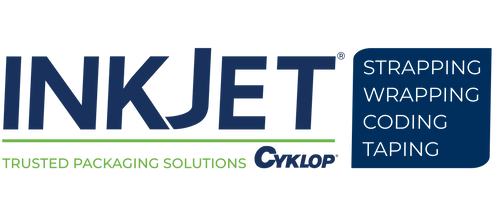Automated Label Printing: Regulations and Your Production Line
Labels are critical in the modern supply chain. With the immense amount of items being sent and received on a daily basis, labels provide order to what would otherwise be chaos. Here are some of the primary components of those labels and the critical function they provide:
- Barcodes: These make modern logistics tracking possible and are used in just about every industry.
- Contents: This typically displays the contents of a carton or pallet so that workers in warehouses and distribution centers know where to direct products as they are received.
- Addresses: These allow the carrier to know where to take products and for the receiver to know who sent these products.
Labels are often the last step a producer takes to fulfill an order and the first thing the buyer checks to mark an order fulfilled. Despite their simplicity, they are clearly an essential part of modern production and are often overlooked.
A label is so simple in production and application—print, peel, and apply—that they often go unnoticed or do not get the attention they deserve. Compared to the production challenges of filling several thousand beverage or food containers and packing them into boxes, labeling that box is a task that may seem minor or trivial. Nonetheless, it is an absolutely essential part of a smoothly running operation.
Automated label printing and application can seem like overkill. However, when a production line has been fully ironed out and is working at capacity, improper label printing and application can be a significant bottleneck to order fulfillment. An automatic label printer and applicator is a way to expand the capacity of an existing production line. It is one of the ways a manufacturer can increase their production to meet demand without hiring more employees or opening additional production lines.
Due to labels and labeling being taken for granted, it is often one of the last steps taken, but it should not be underestimated.
The Importance of Labels in the Supply Chain
One of the reasons that carton and pallet labels are so often overlooked is because up until very recently, they were more of a convenience feature than a must-have. Manually checking products against a manifest was standard practice in most warehouses, distribution centers, and retail stores. Labels were used for product inventories, but just as often, other data points were checked.
Industrial markings are commonly printed on cartons using corrugated printing methods, and individual packaging frequently receives some kind of identifying coding. If a label was damaged or in an inconvenient place, whoever was checking the product could just check the carton coding to visually confirm the product instead.
However, a combination of regulations and increasing automation has changed this. Supply chain automation now depends on machine-readable barcodes to track products. Improving barcode readability with high-contrast black ink on the white background of a printed label is indispensable for working with heavily automated logistics systems. Placing multiple labels at fixed locations on different sides of a carton so one is always available to the reader is also important.
New traceability requirements under the Food Safety Modernization Act (FSMA) and the Drug Supply Chain Security Act (DSCSA) have caused major retailers to implement increasing levels of automation in their logistics systems. This allows them to capture more data and better comply with these traceability requirements and, in turn, demands the application of more labels and more machine reader-friendly labels from vendors.
It is important to note that the regulations themselves are new and the methodologies for compliance are not yet standardized. Traceability is required, but its extent and implementation are still being determined. The result of this uncertainty is that labels are used more widely and more visibly, and automated label printing and application is certainly going to play a large role in the future.
Product manufacturers would do well to implement an automated label printing and application solution before these trends become industry standards. Waiting to do so could lead to a situation where any small mistake could become tremendously costly.
The Challenges of Automated Label Printing and Application
While printing and applying a label manually is a very simple task yet time-consuming task, automating the process requires expertise and careful considerations. Replicating the dexterity of the human hand with a mechanical process is an engineering challenge, and doing so at the speed of a modern production line is an even greater challenge.
Production lines that have procured off-the-shelf automated label printing equipment have been known to experience:
- Crooked placement: In the modern, automated supply chain, labels that are placed crookedly may not be read by label scanners. This leaves inventory unlabeled in automated supply systems, potentially out of compliance with retailer’s standards, and with orders potentially unfulfilled.
- Adherence failures: Labels can fail to adhere to a surface for multiple reasons. For example, the applicator may be out of alignment and miss the mark, leaving the label to fall to the floor where it becomes a slipping hazard. Additionally, the label may have the wrong glue for the surface it is intended for. Both of these leave a box unmarked and needing to be manually relabeled before shipment.
- Label jams: Automated label printers have tight tolerances, and a failure to adequately peel one label from the backing ribbon, or discharge it from the applicator, can block the path of the following labels, leading to a jam. A problem like this can shut down the whole production line.
- Ribbon tears: Labels are moved through the automated systems via a backing ribbon rolled between tensioners. If the tension is improperly set, or a jam occurs, the ribbon can tear. This can leave inventory unmarked and require a great deal of effort to manually mark all unlabeled inventory before it ships.
After seeing these various issues, you might find yourself longing for the simplicity of manual labeling. However, we know that this slow method is not feasible for the majority of production lines. Instead, you would be better served by an intelligent automated label printing and application solution backed by industry experts who can optimize it for your specific needs.
Evolabel® is an automated label printing and application solution that fits the needs of the modern automated supply chain. It is a compact, modular system capable of printing and applying labels to three sides of cartons and pallets in fixed locations that are friendly to warehouse automation. It is also a robust and easy to use system with built-in controls to adjust label design, barcodes, and the content of these labels as needed directly from the printer itself. Most critically, though, is that it comes backed by the decades of experience of InkJet, Inc. for installation, setup, and long term support enabling problem-free automated label printing and application on your production line.
To discover more about how InkJet, Inc. can implement automated label printing and application to optimize your production line contact us online, or call (800) 280-3245.



